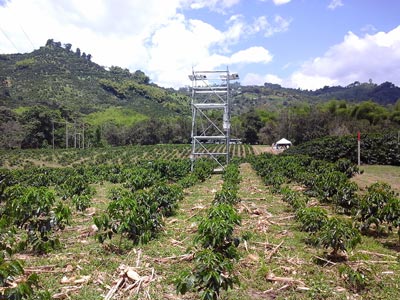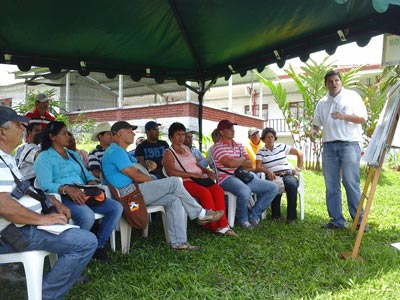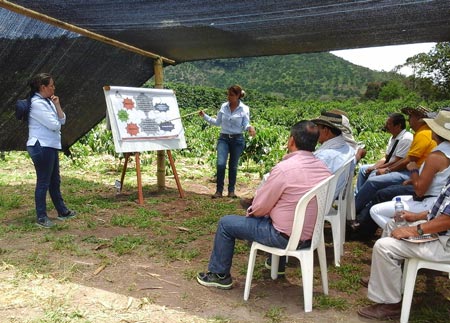
Preliminary results have shown that a maize-coffee cropping system acts like a huge atmospheric carbon sink, capturing up to 60 times more carbon than a coffee-bean system during one cycle of the associated temporary bean crop. In addition, maize creates a more adequate micro-climate for coffee’s growth and development because it reduces air temperature, helps to maintain soil moisture and decreases daytime-nighttime soil temperature fluctuations. This has a buffer effect that benefits soil biochemical processes and improves crop productivity.
To demonstrate advances of the project “Increasing the profitability of maize-coffee systems” that CIMMYT has been conducting in Colombia for 10 years in collaboration with the National Federation of Colombian Coffee Producers (FEDERECAFE, Spanish acronym), two field days were held at the Paraguaycito–Quindío (29 April) and La Catalina–Risaralda (7 May) Experiment Stations belonging to CENICAFE, FEDERECAFE’s research unit. At these events, attended by 158 representatives of the Local Coffee Growers’ Committees and the National Federation of Cereal Growers (FENALCE, Spanish acronym), the latest advances in the areas of climate change, agronomy and genetic improvement were presented.*

On the subject of climate change, Angela Castaño, a Ph.D. student at Cauca University linked to CENICAFE, indicated that at the Paraguaycito Experiment Station, the performance of agro-ecosystem depends on energy-water-carbon dynamics, because its distribution is related to the production system. In the case of coffee, solar radiation, water and atmospheric carbon are distributed differently depending on whether the coffee is fully exposed to the sun, or if it is grown in association with other crops.
With the aim of studying energy-water-carbon dynamics in different coffee production systems, at Paraguaycito there is an Eddy Covariance micro-climate station that measures the sun’s energy and the amount of carbon and water vapor in the production system. Strategically placed sensors in the micro-climate station measure air and soil temperature and humidity, as well as the flow of latent heat (energy used for evapotranspiration) and of perceivable heat (energy used to heat the air). This information is used to study four types of agro-ecosystems that include growing temporary crops during the growth stage of coffee, namely, coffee with maize; coffee with common beans; coffee with pigeon-pea; and coffee under full sun exposure.

Myriam Cañon, Paraguaycito Station Coordinator, mentioned that the coffee-maize association reduces the number of coffee plants that die.
Diego Montoya, La Catalina Station Coordinator, explained that rain is now less frequent but more intense. This causes damage due to surface runoff on the steep terrain where coffee is grown in Colombia. However, there is less damage when coffee is cropped in association with maize because the soil is better protected by both crops.
This is the first of a two-part report; the second part will be published in the next issue of the CIMMYT Informa.
 Climate adaptation and mitigation
Climate adaptation and mitigation